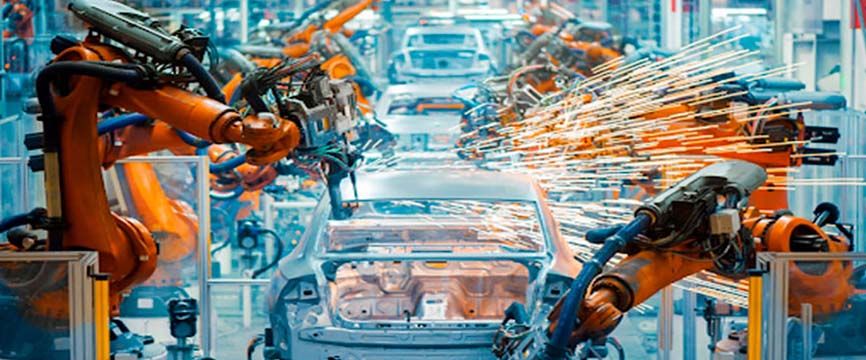Laser welding machines are mainly used for welding bodywork and auto parts in auto manufacturing.
The application of laser welder machines to auto manufacturing can reduce the weight of bodywork to achieve the objective of fuel saving. The assembling accuracy of bodywork can also be improved to increase its strength, thereby enhancing safety. Meanwhile, costs of stamping and assembly can go down and bodywork integrity can be achieved since the number of auto parts declines during the manufacturing process.

The following are the main laser welding processes applied in auto manufacturing.
Laser Fusion Welding
Laser fusion welding is a welding process in which the welding head of the laser welding machine is subjected to high temperatures and other factors to reach a molten state to weld objects, for example, auto parts. Those welded auto workpieces will be bonded together by the mixture and cooling of their molten liquid under the effect of temperature, gravity, and non-pressure. No auxiliary fluxes or fillers are needed for this type of welding because auto parts can be welded together by their own materials.
Laser fusion welding is generally applied for bodywork assembly welding and tailored blank welding in bodywork manufacturing. Assembly welding mainly includes the welding of the top cover and bodywork, the welding of pieces of bodywork, and the welding of the car door and bodywork.
Tailored blank welding is the welding of tailored blanks that are made of steel sheets with different strength, thicknesses, or coatings. It is widely applied to the welding of auto tailored blanks due to its advantages of high efficiency and high welding results.
Compared with ordinary steel sheets, the advantages of tailored blanks are principally in three aspects:
Reduce bodywork weight by applying welding methods to optimize the thickness of sheets.
Improve the utility and performance of bodywork, primarily including safety, corrosion resistance, crash resistance, and strength.
Lower cost, mainly because of material, procedure, and tooling reduction.
Laser robot welding integrates the advantages of remote welding, Galvo scanners, and robot arms with professional graphic processing software to realize three-dimensional multi-trajectory welding. It is generally used for welding bodywork, car seats, commonly used auto parts, etc. This welding process can weld not only conventional materials, such as steel plates, cold-rolled plates, and aluminum alloys but also composite or alloy materials, including magnesium and aluminum alloys. The advantages of laser robot welding include support of various welding patterns and any welding directions, custom distribution of welding point and joints, optimized force distribution, support of high-speed spot, seam, stack, butt, fillet, and lap welding, real-time synchronization of the welding head and robot, and fewer maintenance costs.

Laser Welding with Filler Metal
Laser welding with filler metal is a method of welding by melting the welded material with brazing material using filler metal of the same or similar material as it and then condensing it to form a welding joint. It is mainly applied to weld structural parts of bodywork and other automotive parts and accessories. Its advantages are the decrease in porosity and cracks, improvement in welding quality, and stronger strength of welding joints than the welded material.

Media Contact
Company Name: LASERCHINA
Contact Person: Kevin
Email: Send Email
Phone: 86-10-64426993
Address:#22 Building, #13 Mintai Road Shunyi District
City: Beijing,101300
Country: China
Website: https://www.laserchina.com/

